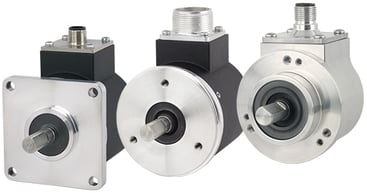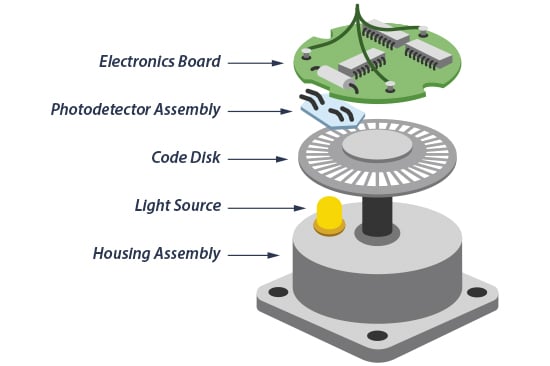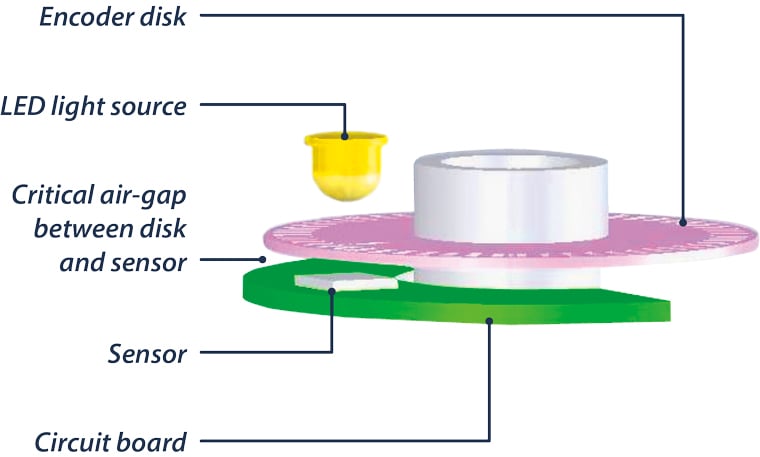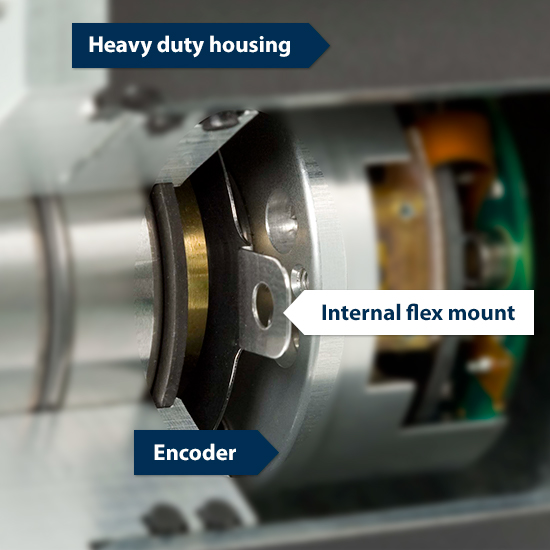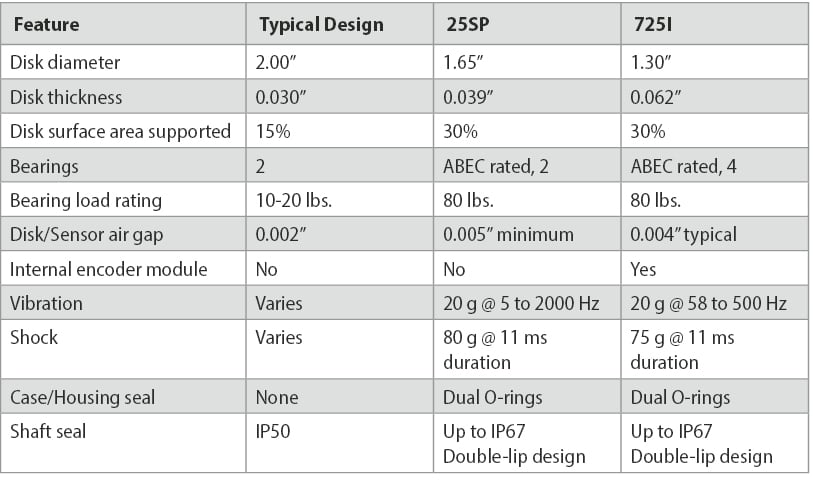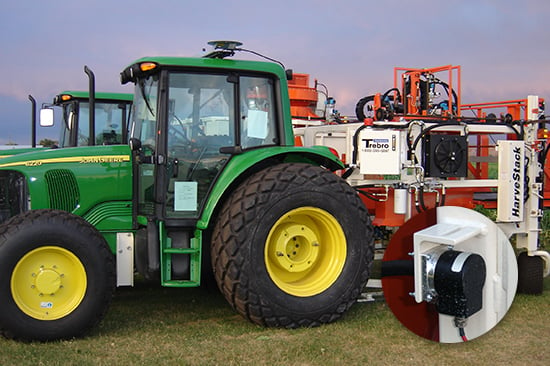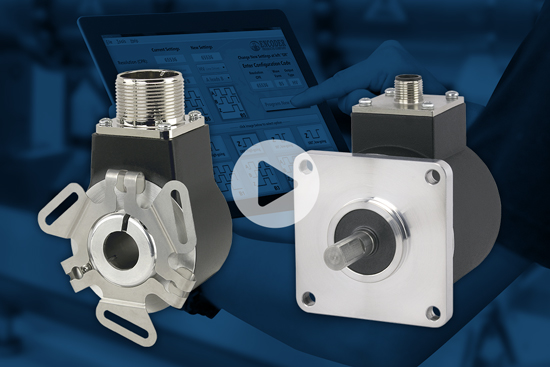In extreme situations, the properties of the disk itself can also make it prone to failure. With typical sensor technology and manufacturing methods, the disk is made as large as possible and is a relatively thin 0.030” thick. The shaft hub that attaches to the disk supports just 15% of its total surface area, making it vulnerable to the slightest impact. These factors combine to increase the likelihood of disc fracture.
When specifying a Size 25 shaft encoder, it’s important to evaluate the potential hazards to the encoder. Heavy shaft loads, shock, vibration, dust, and moisture can greatly reduce the operating life of ill-equipped encoders. Typical Size 25 shaft encoder designs are not adequate to provide long lasting, reliable feedback in such conditions. For demanding industrial applications, preference should be given to encoders that feature:
- Heavy duty bearings
- Wide air gap between disk and sensor (0.004” or more)
- Small diameter disk (1.65” or less)
- Thick glass (0.039” or better) or unbreakable disk material
- Sealing for shaft, housing, and connector
- Adequate protection of internal optics, sensor, and electronics from external hazards
Manufacturers often do not publish all of these specifications in their product literature. This presents a challenge when specifying an encoder. For example, short of physically examining a disassembled sample of the encoder, it may be difficult to determine the disk diameter or sensor/disk air gap. Most manufacturers, however, do publish specifications for shock, vibration, shaft loading and environmental sealing. This information offers some measure of guidance for encoder specification. For industrial rotary shaft encoder applications, preferred ratings are:
- Bearings: ABEC rated bearings with load ratings of 40 lbs or better for radial and axial; 80 lbs preferred
- Shock: Minimum 75 g @ 11 ms duration
- Vibration: Minimum 20 g @ 58 to 500 Hz
- IP Rating: Depends on application, but a minimum of IP65; IP67 preferred. Be sure to confirm that the published rating refers to the shaft and encoder housing, not just the connector.
